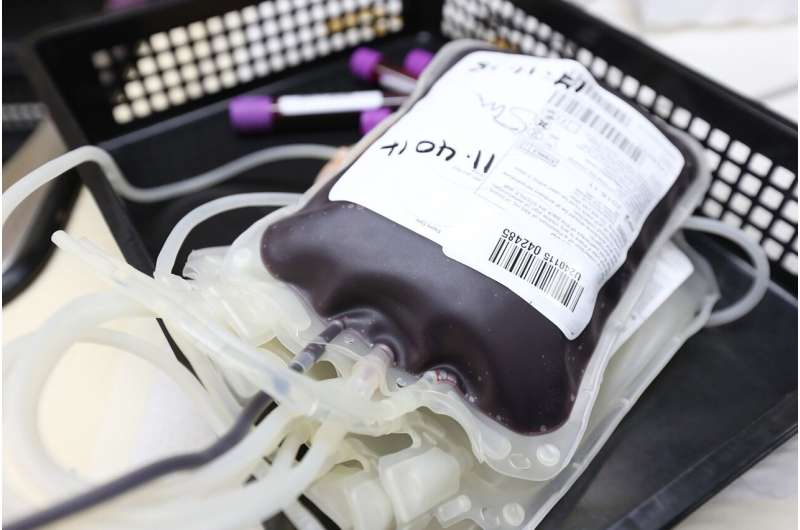A recent large-scale trial published in the New England Journal of Medicine has reignited discussions regarding the optimal thresholds for blood transfusions in patients suffering from aneurysmal subarachnoid hemorrhage (aSAH). This study, spearheaded by researchers at The Ottawa Hospital and the University of Ottawa, aggregates findings from numerous previous studies, contributing valuable insights to this clinical debate.
Understanding Aneurysmal Subarachnoid Hemorrhage
Aneurysmal subarachnoid hemorrhage occurs when a blood vessel on the surface of the brain ruptures, leading to potentially catastrophic bleeding. The outcome can be dire; data suggests that fewer than a third of patients experience a complete recovery. During the initial recovery phase, many patients with aSAH develop anemia (a notable decrease in red blood cells), which is correlated with poorer outcomes.
Despite decades of research aiming to refine transfusion protocols based on hemoglobin levels, the treatment of aSAH patients remains contentious. The recent trial sought to elucidate these complexities.
The SAHARA Trial Design
In this pivotal study, conducted with the collaboration of the Canadian Critical Care Trials Group and 23 medical centers across Canada, Australia, and the United States, over 700 patients suffering from aSAH and anemia were enrolled. Participants were randomly assigned to two groups
- Liberal transfusion strategy: Mandatory transfusion at a hemoglobin level of ≤100 g/l.
- Restrictive transfusion strategy: Optional transfusion initiated at a hemoglobin level of ≤80 g/l.
Key Findings
Upon completion of the study, the researchers undertook a comprehensive analysis of the patients' neurological recovery after one year. The core findings included:
| Outcome Measure | Liberal Transfusion Group | Restrictive Transfusion Group |
|---|---|---|
| Recovery Levels | Somewhat improved | No significant difference |
| Safety of Transfusions | Considered safe | Considered safe |
Although improvements in recovery were noted in the liberal transfusion group, these differences were not statistically significant. Dr. Shane English, the lead investigator, emphasized the necessity of this trial in guiding clinical decisions: “While our results were not statistically significant, they enrich the broader evidence base critical for the care of aSAH patients.”
Comparing Transfusion Strategies
The implications of aSAH treatment strategies are profound, as they not only affect immediate recovery but also long-term patient outcomes. Below is a summary comparison of the strategies:
| Parameter | Liberal Transfusion Strategy | Restrictive Transfusion Strategy |
|---|---|---|
| Hemoglobin Trigger for Transfusion | ≤100 g/l | ≤80 g/l |
| Volume of Blood Transfused | Higher overall volume | Lower overall volume |
| Patient Recovery | Improved but not significant | No significant differences |
The Role of Collaboration in Clinical Research
Dr. Anthony Delaney, who led the Australian arm of the study, noted the trial's contributions to improving clinical understanding and treatment protocols for aSAH. “Successful completion of the trial illustrates the power of international collaboration in addressing challenges faced by vulnerable populations,” he stated.
“We extend our heartfelt gratitude to the individuals and families participating in this research, as well as the exceptional teams at each center involved in this endeavor.” – Dr. Shane English
Looking Ahead
The SAHARA trial is a part of an extensive research initiative co-designed with input from aSAH survivors. The results serve as a critical component in refining blood transfusion practices, with future studies anticipated to further explore effective strategies for improving patient outcomes.
Conclusion
As the medical community seeks to provide optimal care for patients facing the serious consequences of aneurysmal subarachnoid hemorrhage, findings such as those from the SAHARA trial will undoubtedly pave the way for more personalized treatment protocols. Continued research will be paramount in elucidating the complexities of transfusion strategies and their implications on recovery.
References
English, S. W., et al. (2024). Liberal or Restrictive Transfusion Strategy in Aneurysmal Subarachnoid Hemorrhage. New England Journal of Medicine.
Lifespan.io














Discussion